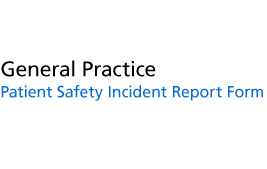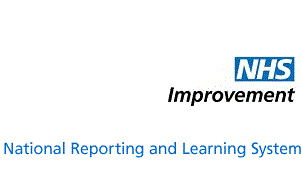Please categorise the Patient Safety Incident from the following choices
There are two steps to answering this question:
Step 1 – select the category (or type) of patient safety incident that you are reporting, there are 16 broad categories which are further subdivided into sub categories
Step 2 – select the sub category that most accurately describes the incident. For each sub category there is an "other" choice if the incident that you are reporting does not match any of the listed sub categories.
Examples
A patient who has been advised to wait to see the GP, but leaves before seeing the GP. Category = access, admission, transfer, discharge
Sub category = absconder / missing patient
A GP or practice nurse fails to act on signs and symptoms correctly, or fails to carry out the necessary examinations to elicit the signs.
Category = Clinical assessment
Sub category = diagnosis – Delay / failure
Giving confidential information such as smear test results inappropriately over the telephone to a patients husband without her permission.
Category = Consent, communication, confidentiality
Sub category = breach of patient confidentiality
A patient threatens physical violence against another patient in the reception waiting area and has to be restrained by two members of staff to prevent a physical attack.
Category = Disruptive, aggressive behaviour
Sub category = physical
A newly registered patient attends the surgery for an appointment with the GP but their notes / records have not been received by the new practice.
Category = Documentation
Sub category = documentation – no access to
Repeat retinal screening results for diabetic patient are scanned and filed in the patients records without review by the patients GP.
Category = implementation of care and ongoing monitoring
Sub category = test results / reports – failure / delay to interpret or act on
Inappropriate disposal of clinical waste, such as blood leaking from yellow clinical waste bags onto the floor or dirty needles not being disposed of correctly in the sharps bin.
Category = Infection control incident
Sub category = unsafe / inappropriate clinical environment
A patient suffering a minor burn on their leg after coming in contact with exposed pipes in the surgery waiting room.
Category = Infrastructure
Sub category = unsafe environment
A diabetic patient attends a routine diabetic check appointment with the practice nurse and reports feeling light headed and dizzy. The nurse wishes to check the patients' blood glucose level but is unable to do so as the surgery has run out of blood glucose monitoring strips.
Category = Medical device / equipment
Sub category = Lack of / unavailability of device / equipment
A patient returns to the surgery and explains that she has been given the wrong medicines on her repeat prescription. She has been prescribed Fluvoxamine tablets but she no longer takes these as her GP changed her medication to Fluoxetine capsules six months ago.
Category = Medication
Sub category = Prescribing
The full list of categories and sub categories are in the table below.
| Category | Sub category |
|---|---|
| Access, Admission, transfer, discharge (including missing patient) |
|
| Clinical assessment (including diagnosis, scans, tests, assessments) |
|
| Consent, communication, confidentiality |
|
| Disruptive, aggressive behaviour (includes patient to patient) |
|
| Documentation (including electronic and paper records, identification and charts) |
|
| Implementation of care and ongoing monitoring / review |
|
| Infection control incident |
|
| Infrastructure (including staffing, facilities, environment) |
|
| Medical device / equipment |
|
| Medication |
|
| Patient accident |
|
| Self-harming behaviour |
|
| Treatment, procedure |
|
| Maternal fetal neonatal incidents CNST triggers |
|
| Pressure ulcer |
|
| Other |
|

